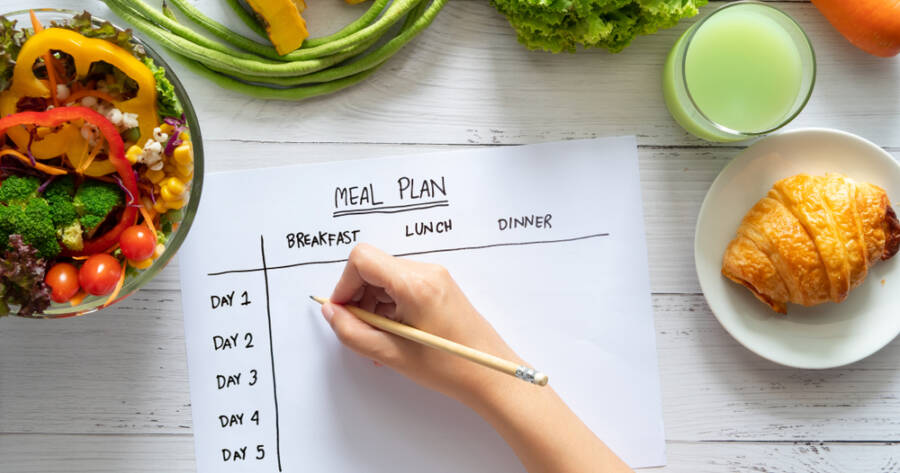Meal prepping has become a popular way to eat healthier and save money. By planning your meals in advance, you can avoid expensive takeout, reduce food waste, and ensure you always have nutritious options ready to go. Whether you’re looking to eat more vegetables, cut down on processed foods, or simply save time during the week, meal prepping can be the solution. Explore how to get started with effective meal prepping.
1. Plan Ahead for Success
The foundation of any successful meal prep is careful planning. Start by choosing a few recipes that are both nutritious and easy to make in bulk. Focus on dishes that use similar ingredients, which will make shopping easier and reduce waste. A balanced mix of proteins, vegetables, and whole grains should be your main goal. Planning for the week ahead will not only help you stay on track with healthier eating habits but also ensure you don’t overspend on ingredients.
Creating a meal plan doesn’t need to be complicated. Start with five to seven meal ideas for the week, and choose recipes that can be made in batches. For example, a large pot of vegetable soup or a big batch of grilled chicken can be used for several meals. This way, you can mix and match different dishes throughout the week without the need to cook every day.
2. Buy in Bulk and Choose Affordable Ingredients
One of the best ways to save money on meal prepping is by purchasing ingredients in bulk. Buying items like rice, pasta, oats, and canned beans in larger quantities can significantly reduce your grocery bill. Plus, these ingredients have long shelf lives, so you won’t have to worry about them going bad quickly.
When selecting fresh produce, focus on seasonal vegetables and fruits, which tend to be more affordable and flavorful. Frozen vegetables are also a great option as they last longer and are often more affordable than fresh varieties. By choosing budget-friendly ingredients like these, you can create healthy, satisfying meals without spending a lot of money.
3. Batch Cooking: A Time-Saving Strategy
Batch cooking is one of the most effective strategies when it comes to meal prepping. Instead of cooking individual meals each day, prepare large portions of a few core dishes that can be easily divided into servings for the week. This approach not only saves time but also reduces the temptation to reach for unhealthy snacks or order takeout.
Start by preparing your proteins, grains, and vegetables in large quantities. For instance, you can cook a big batch of quinoa, roast a tray of vegetables, and grill chicken or tofu. Once everything is cooked, divide the meals into individual portions and store them in airtight containers. Label each container with the date and the type of meal to stay organized.
Batch cooking also allows you to experiment with different flavors and cooking techniques. You can cook your proteins in various marinades and seasonings, so you don’t get bored with the same meals each day.
4. Use Proper Storage to Keep Meals Fresh
Proper storage is essential for keeping your meal prep fresh throughout the week. Invest in quality containers that are microwave-safe, leak-proof, and easy to stack. Glass containers are often the best option because they keep food fresh and are better for the environment than plastic. You can even buy compartmentalized containers to keep different parts of your meal separate until you’re ready to eat.
Label your containers with the date so you know when to eat them. Generally, cooked meals can be stored in the fridge for 3-4 days, while meals with certain ingredients like leafy greens might only last 2-3 days. For meals that you want to keep longer, consider freezing them. Many dishes, such as soups, stews, and casseroles, freeze well and can be reheated on a busy day.
5. Make it Enjoyable: Add Variety and Flavor
Meal prepping doesn’t have to be boring. One of the biggest challenges people face is getting tired of the same meals. To keep things exciting, try to mix up your flavors and textures. You can change the seasoning in your meals or swap out ingredients each week. For example, try using different grains such as farro, barley, or couscous in place of rice or quinoa.
Adding fresh herbs, hot sauces, or homemade dressings can bring a new dimension of flavor to your meals. Don’t forget about the power of spices—cumin, paprika, turmeric, and garlic powder can transform a simple dish into something exciting. Also, try to include a variety of vegetables in your prep so you never feel like you’re eating the same thing each day.
Meal Prepping for Long-Term Success
Meal prepping is an excellent way to save money and eat healthier. By planning ahead, buying ingredients in bulk, and using time-saving strategies like batch cooking, you’ll be able to stick to your healthy eating goals without feeling overwhelmed.
It may take a bit of time to get into the rhythm of meal prepping, but once you do, it will feel like second nature!

